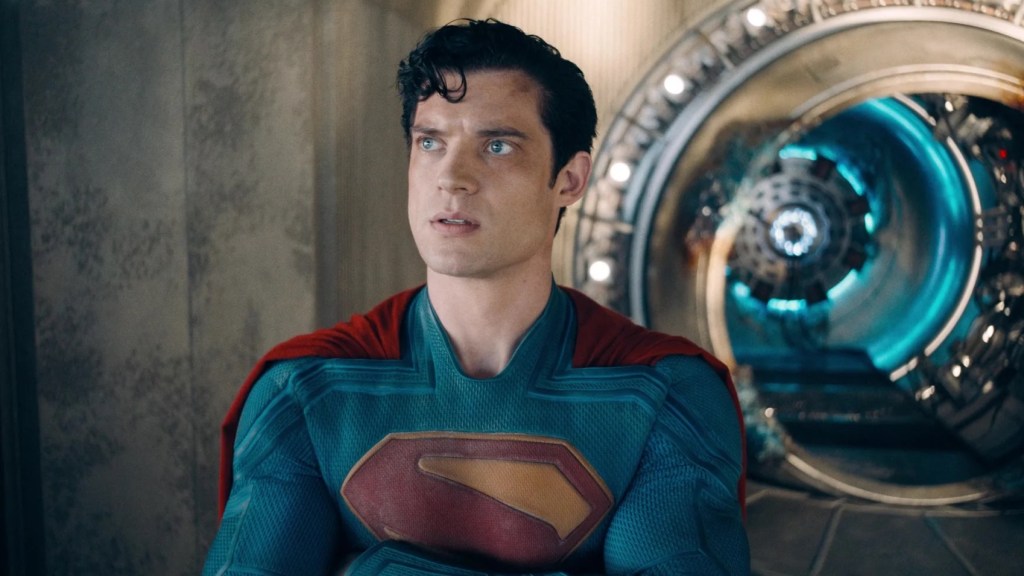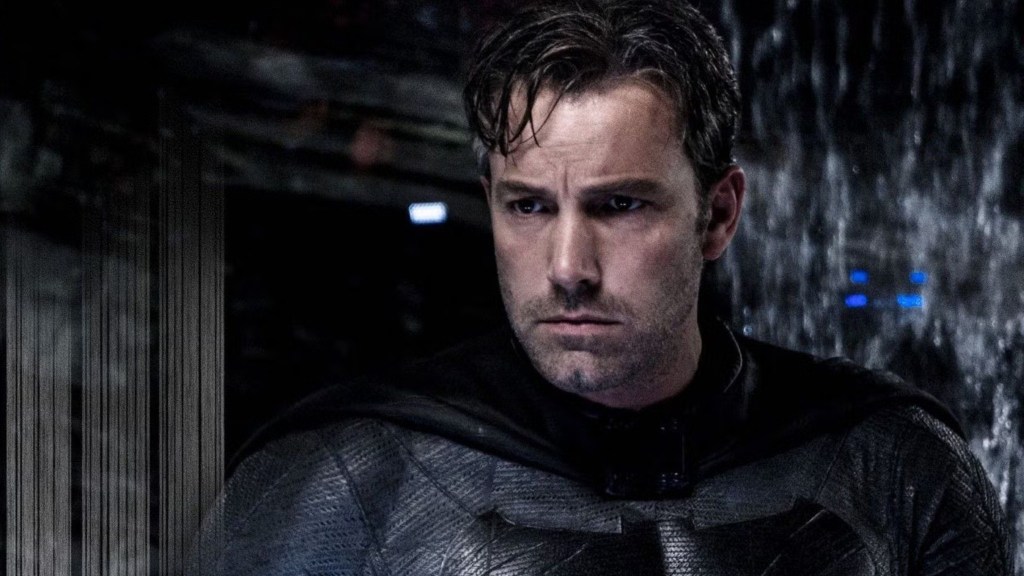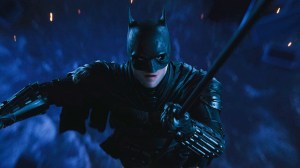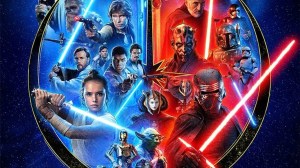Both speculation and support are growing for Robert Pattinson’s Batman to enter James Gunn’s DCU, but doing so overlooks a multitude of factors that could spell doom for the entire endeavor. Robert Pattinson first debuted as the Dark Knight in 2022’s The Batman, written and directed by Matt Reeves, with the movie focusing on Bruce Wayne in his second year as Batman as he battles various criminal factions in Gotham City along with the mysterious criminal known as The Riddler (Paul Dano). Launched as the first of larger universe known as “The Batman Epic Crime Saga”, The Batman‘s success was followed by the HBO Max spin-off series The Penguin, centered on Colin Ferrell’s Oz Cobb.The Batman: Part II, meanwhile, has experienced numerous delays in spite of its predecessor’s success, with the sequel currently scheduled to hit theaters in late 2027.
Videos by ComicBook.com
Meanwhile, with the launch of James Gunn’s interconnected DC Universe (the DCU), via 2025’s Superman, that franchise will also need its own Batman. Despite a Batman movie already being in the DCU’s slate (Batman: The Brave and the Bold), rumors continue to swirl about the possibility of Pattinson’s singular Batman being retconned as the Batman of the DCU, with the possibility having a fair amount of fandom support behind it. However, the drawbacks of making Pattinson’s Batman the DCU’s Dark Knight are big, alongside the possibility of such an attempt at a crossover being extremely detrimental to the future of Reeves’ franchise.
Matt Reeves and James Gunn’s DC Universes Are Too Different To Exist as One

From the introduction of his Batman universe that began in The Batman, Matt Reeves has gone down a similar path as Christopher Nolan did with The Dark Knight trilogy in centering his franchise exclusively on the Caped Crusader. Because of that, The Batman and its spin-off series The Penguin are worlds that are bereft of superpowers and metahumans, and operate under an arguably even darker tone than Nolan’s Batman movies ever did. James Gunn, by contrast, has gone in the exact opposite direction with the introduction to the DCU with Creature Commandos, Superman, and Peacemaker season two.
Gunn’s unfolding DCU is, by both expectation and necessity, a world in which the presence of metahumans is a long-established fact of life, and metahumans have existed for at least three centuries at the beginning of Superman. Moreover, Gunn’s trademark comedy is all over every DCU project released thus far, ranging from very adult-oriented in Creature Commandos and Peacemaker to more family-friendly in Superman. While both Reeves’ and Gunn’s approaches to building DC franchises have their own individual merits, the point of divergence between the two is how much Pattinson’s sullen, soft-spoken Batman is very much a product of the specific DC world as conceived by Matt Reeves.
The same is true for David Corenswet’s happy-go-lucky Superman, and as the two heroes who make up the World’s Finest, Batman and Superman also act as reflections of the worlds they have been adapted to cinematically. While it is undeniably the case that Batman and Superman represent dark and hopeful symbols of heroism in a co-existing world, it is also the case that the introduction to specific versions of the two sets the table for the larger worlds they inhabit. Pattinson’s Batman reflects a somber tale of heroism in a Gotham City where it rains 320 days out of the year, while Corenswet’s Superman is as chipper and cheerful as Scream’s Dewey Riley, while also seemingly facing little real difficulty in his superheroic life before the opening of Superman. Pairing Pattinson and Corenswet’s specific versions of Batman and Superman goes well beyond being a meeting opposites, and is more akin to the futility of trying to blend oil and water.
DC Keeps Promising Co-Existing Elseworlds – It’s Time To Finally Deliver on That

Adding to the question over whether Robert Pattinson’s Batman should be integrated into the DCU is how much doing so overlooks one of DC’s greatest strengths, of being a multiverse in which infinite numbers of vastly different versions of every hero and villain co-exist. The concept of the multiverse (or, in more DC-specific lingo, “Elseworlds”) is very much part of what makes DC, DC, and the last half-decade has seen Warner Bros. placing great emphasis on DC’s multiverse as a major storytelling asset for movies and TV. Unfortunately, Warner Bros. and DC have mostly delivered a lot of false starts on that promise.
Going back to the CW’s Crisis On Infinite Earths mini-series, the first DC Fandome of 2020, and 2023’s The Flash, DC has built much of its hype during that time around the idea that every DC film and television property, past, present, and future, co-exists in a larger multiverse. The exciting prospect of that is how much it unshackles everything in the DC canon from having to follow a singular framework, or effectively having to cancel any other out.
As in the comics, a DC multiverse presents the enticing Elseworlds sales pitch of “Why settle for one version of Batman when there are so many different ones to choose from?” When DC Comics itself reflects that exact mindset with the radical night-and-day differences between the mainline continuity and the phenomenon of greatly re-imagined characters that is DC’s Absolute Universe, it feels baffling and, indeed, like a great deal of unfulfilled hype that DC is not reflecting the same approach on movies and TV.
The beginnings of the DCU also indicate that Gunn himself seems to agree with that idea, with Superman introducing the concept of pocket universes, and Peacemaker season two extrapolating upon that tremendously, with the show establishing at least 100 different DC realities coexisting. With that single concept alone and Gunn’s own stated enthusiasm for Elseworlds projects alongside the main DCU, Matt Reeves’ The Batman universe can easily thrive right alongside Gunn’s DCU, with another 98 alternate realities for DC Studios to play with. That very framework established by Gunn makes incorporating Pattinson’s Batman into the DCU feel like a glorified game of continuity-based musical chairs, and one that continues to leave the possibility of DC as a film and TV multiverse in the vein of its comic book namesake a hype train that has never been given the chance to leave the station.
Too Many DC & Marvel Movies Following the Same Template Guarantees Superhero Fatigue

The discussion of both The Batman‘s cinematic future and that of the DCU also comes amid a broader debate over whether superhero fatigue has finally taken hold over moviegoers. Ironically, Pattinson’s Batman being retrofitted into the DCU could be a means by which to inadvertently take superhero fatigue from a theoretical trend to an established cinematic fact. Many point to the surprising number of DC and Marvel movies to underperform or outright bomb since (roughly) 2022 as evidence of superhero fatigue, but such analysis is also overly simplistic. All genres ebb and flow in terms of commercial success, and there are a myriad of factors to weigh into as to what has caused superhero movies of late to not see box office returns of the Avengers: Endgame era.
The facts of box office numbers in general, taking a sizeable hit in the post-COVID world alongside the $1 billion breakout performance of 2024’s Deadpool & Wolverine show the fallacy of declaring superheroes running into box office Kryptonite as a general trend. Additionally, the $605 million performance of Gunn’s Superman shows the general heights of success superhero movies can reach even when the genre has hit a collective rough patch, heights that few other genres can match with the same level of overall consistency.
What can accelerate the rise of genuine superhero fatigue, however, is a superhero movie landscape in which audiences feel like they’re getting nothing that stands out from the rest of the crowd. The Marvel Cinematic Universe may have set that template for interconnected universes, but the term “Marvel formula” also exists for a reason; Marvel movies are well-known for their character ensembles, comic relief, and end-credits teases of future movies and shows. The best antidote for DC Studios to combat superhero fatigue is to fashion its various movies and TV shows to look and feel as different from one another as possible. While Gunn has spoken of the DCU embracing a wide variety of tones from the more adult-geared to the kid-friendly, placing Pattinson’s Batman into the DCU could also signal a consolidation of everything DC into a set of specific parameters that could have the opposite effect from whatever would be intended, and simply hasten audience burnout. With DC Studios having a Batman who stands so well on his own, a Batman crafted to stand side-by-side with the DCU’s Superman feels like a much safer way to diversify DC’s portfolio.
Reworking Ongoing DC Franchises From One Style to Another Is a Recipe for Disaster (As the DCEU’s History Shows)

What also complicates the continued speculation of Pattinson’s Batman entering the DCU fray is how much it also overlooks how Pattinson’s Batman tenure began in the first place – that being with the infamous mishandling and counter-productive attempts at course-correction that plagued the DCEU and which hit Ben Affleck’s Batman particularly hard. Convinced to don the cowl on his excitement for Zack Snyder’s pitch of an older, battle-hardened Batman sent a specific hero’s journey (and intended to culminate in his heroic sacrifice to save the world from Darkseid), Affleck’s enthusiasm for the role plummeted after the extensive reshoots and reworking that Warner Bros. imposed on 2017’s Justice League in response to the polarized reception of Batman v Superman: Dawn of Justice. That one decision by Warner Bros. brass ended up costing the DCEU dearly, with Affleck departing his planned Batman solo movie, numerous other DCEU projects never being realized amid that behind-the-scenes drama, and 2021’s Zack Snyder’s Justice League an eternal reminder of one terrible fork in the road in the DCEU’s then-unfolding path.
Affleck’s Batman movie eventually morphed into Matt Reeves’ The Batman with Robert Pattinson as the Caped Crusader, with Reeves making the explicit decision to place his Batman outside of a metahuman-populated franchise like the DCEU. Trying to rework Pattinson’s Batman into the DCU does not simply stand completely at odds with the Batman franchise Reeves set out to make, but could also become a case of history repeating itself in the worst way possible. If Reeves is pressured into retooling his Batman universe to fit the DCU similarly to the studio-mandated course corrections for Justice League and the DCEU that ended up being anything but, it is certainly not impossible for an impasse to emerge in which Reeves, Pattinson, or both walk altogether like Affleck did, with The Batman getting the same square-peg-to-round-hole reworking that so badly damaged the DCEU. When all’s said and done, Matt Reeves imagines his version of Batman as one thing, while James Gunn no doubt has another for his. Trying to merge the two could afflict the DCU with many of the same difficulties the DCEU faced, on top of failing to properly capitalize on the 100 DC Universes Gunn himself has established for DC Studios to choose from.
James Gunn’s Superman is now available to rent and buy on Amazon Prime Video, Apple TV, Google Play Movies, and Fandango at Home, and The Batman: Part II will be released in theaters on October 1st, 2027.









